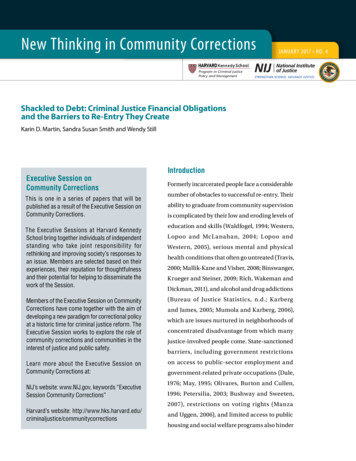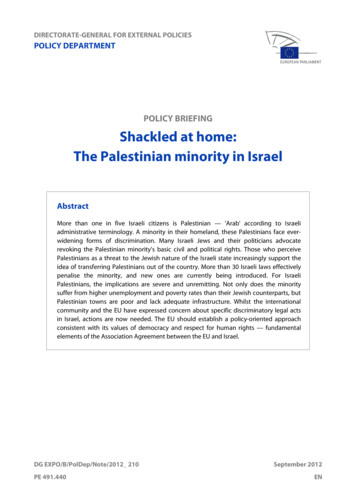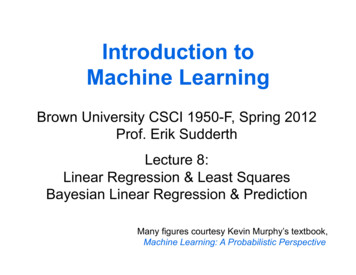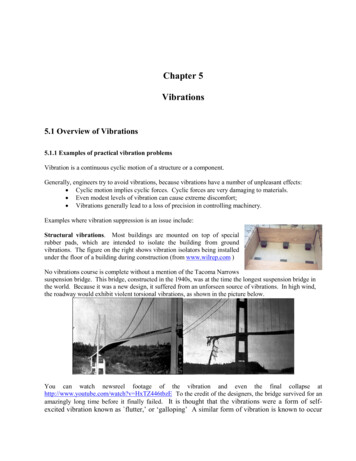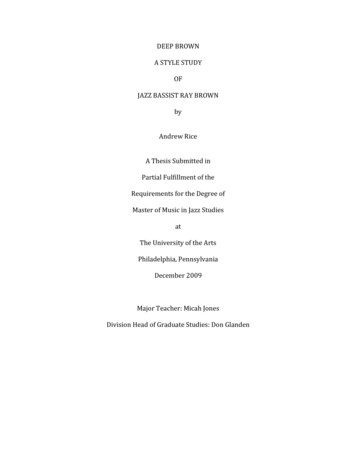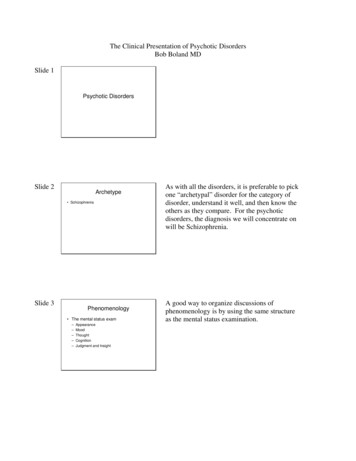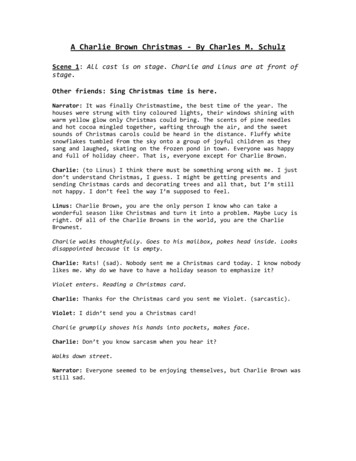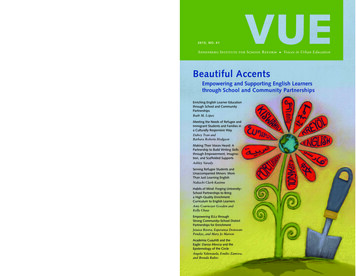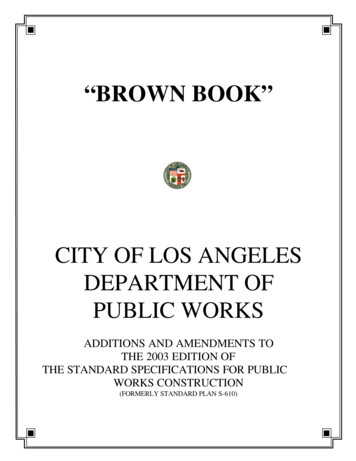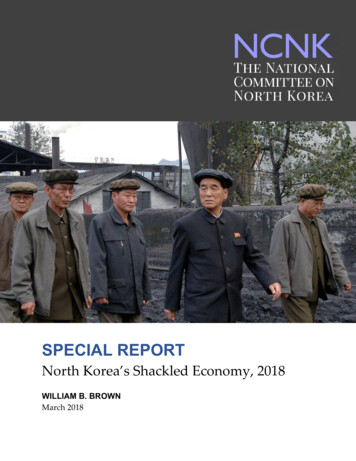
Transcription
SPECIAL REPORTNorth Korea’s Shackled Economy, 2018WILLIAM B. BROWNMarch 2018
North Korea’s Shackled Economy, 2018ABOUT THE AUTHORWilliam Brown is an adjunct professor at Georgetown University School of Foreign Service wherehe teaches courses on the Chinese, Japanese, and Korean economies, and he continues to docontracting work for the federal government from which he is retired. His most recent servicewas as Senior Advisor to the National Intelligence Manager for East Asia in the Office of theDirector of National Intelligence. Prior to that his career as an economist and East Asia specialisthas included extensive work in CIA, Commerce Department and the National IntelligenceCouncil where he served as Senior Research Fellow for East Asia and as Deputy NationalIntelligence Officer for Economics. Brown was a founding member of the National Committee onNorth Korea, and currently serves as a non-resident fellow at the Korea Economic Institute ofAmerica. He received an MA in Economics and Chinese studies, and most coursework for thePhD, from Washington University in St. Louis and his BA in International Studies from RhodesCollege in Memphis. Brown was raised in Kwangju, Korea by Presbyterian missionary parentswho themselves were born and raised in China and Korea, respectively. He and his wife live inHerndon, Virginia and have four grown children.NCNKThe National Committee on North Korea (NCNK) is a non-governmental organization of personswith significant and diverse expertise related to the Democratic People’s Republic of Korea.NCNK and its members support principled engagement with North Korea as a means to promotepeace and security on the Korean Peninsula and to improve the lives of the people of North Korea.NCNK also works to provide policymakers, the academic and think tank community, and thegeneral public with substantive and balanced information about developments in North Korea.NCNK was founded by Mercy Corps, a global aid and development organization, in 2004.CONTACTThe National Committee on North Korea1111 19th St. NW, Suite 650Washington, DC 20036www.ncnk.orginfo@ncnk.org@NCNKoreaHonorary Co-Chairs: Amb. Tony P.Hall and Amb. Thomas C. HubbardSteering Committee: Charles Armstrong,Brad Babson, Robert Carlin, KatharineMoon, Susan Shirk, Scott Snyder, RobertE. Springs, and Philip YunExecutive Director: Keith LuseCopyright 2018 by the National Committee on North Korea. All rights reserved.Cover Image: Premier of the State Council, Pak Pong Ju, visits the Pukchang power plant, North Korea’smost important industrial facility, 23 October 2017. Photo via KCNA.NCNK 1
Special ReportExecutive Summary1The North Korean economy remains weak and vulnerable, but its structure is changing as itconfronts major internally- and externally-generated pressures. Ironically, as UN sanctions havetightened in recent years, the economy has become more decentralized and productive, asweakening state controls have allowed the spread of market activities, providing incentives forindividuals and families to work in their own self-interest. Central planning is weakening asmoney replaces the once ubiquitous ration coupon, and self-reliance on both a national andlocalized level is increasing as foreign trade and foreign aid dwindle. However, the state-runeconomy has not withered away, and Pyongyang dictates perhaps half of all economictransactions, a far larger share than does the central government in any other country. The stateand its enterprises and the huge farmers’ collectives still own most capital and property, andthrough their extensive regulations and police powers extract large rents from individuals andfamilies.The people of North Korea are very poor. The country’s GDP per capita – estimated atanywhere between 700 and 2,000 – places North Korea near the bottom of world rankings,and even these figures give an exaggerated notion of living standards. A large share of GDP isspent by the government for itself and its military, and relatively little goes to people’sconsumption. People continue to suffer from shortages of food, fuel, electricity, running water,and other necessities, although there is little evidence of an ongoing famine as experienced inthe 1990s. Malnutrition and food insecurity remain widespread, especially outside ofPyongyang, although UN nutrition surveys have shown a gradual decline in malnutrition ratessince 2000.2 Unusually for a command economy system, few state resources appear to bedevoted to investment. The country runs a persistent and large merchandise trade deficit,financed by small amounts of foreign aid, net service sector earnings, illicit activities, andremittances from tens of thousands of overseas workers and compatriots.Never the “hermit kingdom” suggested by outsiders, or the self-reliant economy as promotedby the ruling Kim family, North Korea is now being forced into a shell as its nuclear activitiescreate barriers for economic interaction with the rest of the world. The various UN sanctionsresolutions adopted in the past two years prohibit nearly all of the country’s exports and otherincome-earning activities, and have also banned or restricted many categories of North Koreanimports, including fuel. With the adoption of these sanctions, even China – mostly a steadfastpartner for sixty-five years – is sharply cutting its purchases from North Korea, and othercountries have essentially stopped trade. But sanctions have been just part of the problem.North Korea’s lack of membership in the world’s market trading system, the WTO, has meantthat major trading nations automatically place high tariffs on North Korean exports, makingthem uncompetitive internationally. Pyongyang’s decades-long sovereign debt default,meanwhile, adds to its inability to access foreign credit or direct investment.2 WILLIAM BROWN
North Korea’s Shackled Economy, 2018Ironically, these economic and political troubles provide a narrow pathway for reforms thatcould unshackle the economy, creating growth even greater than its stellar neighbors, SouthKorea, China, and Japan, at equivalent periods in their development. As with those countries,major policy corrections must be made internally, but overseas aid agencies and the UN, giventheir own poor record of success, also should reconsider their programs and condition futurework on market and productivity enhancing reforms. These could begin with: Transferring ownership of property from the state to the private sector whereverpossible, liquidating real assets to generate funds for public investment while allowingprivate interests to use this property more productively. This is the China model. Unifying the bifurcated monetary system, possibly under a U.S. dollar or RMBcurrency board. The current system, with domestic and foreign currencies used sideby-side for domestic transactions, entails great vulnerability should the North Koreanwon begin to slip in value. Unifying the wage system by bringing state salaries in line with market wages, andpaying workers directly with real money, rather than ration coupons that stifleproductivity and prevent financial savings. Allowing private farming and the private ownership and transfer of farm assets,allowing the agricultural sector to become more productive and thereby increasing thesize of the urban workforce.An end to international sanctions, which would presumably require the dismantlement ofNorth Korea’s nuclear program, would be necessary for the country’s reintegration into theinternational economy, but would by itself be insufficient to revitalize the country’s economy.To fully unshackle the potential of the North Korean economy, the U.S. and others could couplethe prospect of sanctions relief with an offer to sponsor North Korea into a WTO accessionprocess, as it did with China seventeen years ago. WTO accession would be a win for all sides,given it would require most of the above reforms and would open the world’s markets to whatwould no doubt become highly competitive North Korean industries.NCNK 3
Special ReportNorth Korea’s Macroeconomic ConfusionNorth Korea publishes little economic data, hence many measures of aggregate production andconsumption are little better than guesswork on the part of outsiders. The country’s onlyofficially released macroeconomic data is that given to the UN Statistics Division responsible forsystematic national income accounting (GDP) of all UN members, but the GDP figuresPyongyang provides are extremely small – only 16.8 billion in 2016, or just 665 per capita –and appear unreliable.3 While up from 575 in 2006, the per capita figure would place NorthKorea below what most would consider to be subsistence income, especially after considerationof the high share of GDP that undoubtedly goes to the government, leaving little (probably lessthan a dollar a day) for consumption. This data indicates that agriculture and fishing constitute22 percent of GDP; mining and energy production 18 percent; manufacturing 21 percent;construction 9 percent; and services 31 percent. The UN data also shows 1 billion in goods andservice exports in 2016, and 1.9 billion in imports – considerably less than the merchandisetrade estimates of 3 billion in exports and 3.9 billion in imports that KOTRA, a South Koreanagency, calculates based on mirror trade data.4 Finally, North Korea’s data also show the totalpopulation as 25.3 million in 2016, growing at a slow 0.5 percent per year, and an agedependency ratio – the proportion of the population supported by those of working age (15-65years) – of a modest 44%.5Two foreign agencies, South Korea’s Bank of Korea and the CIA, attempt to fill in the gaps bymaking annual proxy estimates of GDP using, presumably, extensive intelligence collection onNorth Korea. The Bank of Korea estimates that North Korean GDP grew by four percent in2016, rising to about 32 billion, or about 1,500 per capita, as electric power, coal, metals, andmanufacturing each are thought to have rebounded from declines the year before. Agricultureimproved slightly, and services, both government and private, are figured to have declined.6This was the fastest estimated growth since 1999, although most if not all the improvement islikely to have evaporated in 2017 due to plunging exports and a weak harvest. The Bank ofKorea’s estimate of North Korean GDP, which uses South Korean prices and value-addedweights to calculate the value of North Korean economic activities, would put it at about onefortieth of South Korean production, or one-twentieth South Korea’s GDP per capita. The CIA,in its World Factbook, makes a parallel effort to gauge North Korea’s economy, coming up withGDP in a wide range of 30- 50 billion and with a slight decline in 2015, its latest estimate.7 Itsays its methodology is rough and its goal seems to be to fill in a gap in its worldwide GDPpresentation. It ranks North Korean per-capita income as 215th out of 230, in league with SouthSudan and The Gambia.8Regardless of the roughness of these numbers, each paint a broadly accurate picture of a partlyindustrialized country with a large though outdated capital stock, a literate and well-trainedworkforce, extensive but poorly used natural resources, modest and dilapidated infrastructureexcept in its capital city, and a socialist control system that in theory and in law denies private4 WILLIAM BROWN
North Korea’s Shackled Economy, 2018ownership of the means of production, including virtually all capital stock and land.9 TheKorean Workers’ Party, through its planning commission and price control bureau, has triedsince the 1950s to implement a centrally planned or “command” economy, in which mostnormal economic decisions are made by central authorities and markets – even money – playminor roles. Nominal prices, wages, and interest are supposed to be fixed according to socialdesirability, not private demand. Economic growth is desired, so production is geared toinvestment goods, not goods for consumption or for export.The system never worked well, and key parts broke down amidst a massive famine in the1990s. The result in 2018 is a hybrid system with unregulated and often unruly markets, andwith market prices and profit-driven allocations competing with the state’s fixed prices andplanned allocations. It is thus a land of many prices for the same good, service, or hour worked.Trade with the rest of the world is severely constrained by the need to protect this fixed pricesystem. (Otherwise, for example, with domestic prices of coal cheap and external pricesexpensive, all the coal would be exported with none left for electricity production. If domesticprices were increased, coal-intensive heavy industry would be bankrupted.) Even before theadoption of UN sanctions, the result of this system was extremely poor efficiency in the use oflabor and capital and thus a poverty-stricken population. But while malnutrition remainswidespread, pockets of relative wealth are emerging as market activity takes hold in some areasand among some population groups.The resiliency of this bifurcated economic system – one money and profit driven, the othercommanded by the central state through rations and coercion – is often seen as remarkablegiven the torturous path the economy has undergone. North Korea has consistently defiedpredictions of collapse or systemic reform, which were especially prevalent during the 1990safter the Soviet Union and its Eastern Bloc satellites collapsed, as China shifted from plan tomarket, and as North Korea itself underwent famine and the death of its founder, Kim Il Sung.One explanation for this resiliency may be that foreign aid, which has historically been quitehigh relative to North Korean GDP, has provided the central state with just enough resourcesneeded to prevail in its epochal fight with private markets, but never enough to buy back theeconomy and fully reinstate the command system.As shown in the sections below, the countr
except in its capital city, and a socialist control system that in theory and in law denies private . North Korea’s Shackled Economy, 2018 NCNK 5 ownership of the means of production, including virtually all capital stock and land.9 The Korean Workers’ Party, through its planning commission and price control bureau, has tried since the 1950s to implement a centrally planned or “command .
